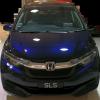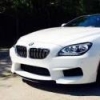Search the Community
Showing results for tags 'DIgital'.
-
Recently, I had a scare at work. My laptop was suddenly unable to access the Internet despite working fine the entire day. A check with IT showed that the browser I was using, Arc, had somehow triggered the Falcon cybersecurity program, which promptly locked down my laptop despite the browser having worked fine for almost a year at that point. While I thankfully had cleared out my video backlog before it happened (most of them pending approval, a couple ready to publish), I was unable to access the Internet both for research (and background music/videos for stimulation) and my blog drafts on Google Docs, so I ended up writing a fair bit of this post in Microsoft Word before it was resolved. Amid my initial restlessness, I started to wonder about how the world we live in has become so hyper-connected that any inconvenience, as I found out, can cause major disruptions to our lifestyles. A CATCH-22 SITUATION Much has been said about the effects of digital tools like the Internet and social media on its users. Regardless of whether you do the finger-pointing or find yourself on the receiving end of someone else’s, we can all plead guilty to spending more time with devices than we’d like. If not doom scrolling, we’re putting aside healthy activities like sleep and going outside to finish a binge watch of a new Netflix series, or play one more round of, I don’t know, League of Legends. Outside of leisure, the average worker is still interacting with digital devices for work. We often hear of how hard it is for Singaporeans to avoid working after official working hours, but even within those hours, we spend so much time looking at screens that there is plenty of documentation of health problems arising from looking at one thing (a screen in many cases) for hours on end. “But… but we need to get work done to survive,” one might argue. Truly a depressing realisation. IS THERE REALLY NO HAPPINESS (WITHOUT DIGITAL DEVICES)? There has been a resurgence of offline lifestyles, perhaps a pushback against the increased digitalisation of our lives during the COVID-19 pandemic. They can manifest as “digital detoxes” where practitioners abstain from technology completely for brief periods of time, as well as solutions like turning our existing smartphones into “dumb phones” to reduce device use to essential functions like communications (i.e. phone calls and messages). There is even “digital minimalism”, a term coined by American professor Cal Newport who promoted a process of deliberate engagement with technology in a book of the same title. This was my second time seeing Porter Robinson in person, after the Singapore stop of the Nurture Live Asia Tour 2023. I thought that was one of my best nights of 2023, but the Smile World Tour turned out to be even better in terms of audience participation. In the same vein, I attended Porter Robinson’s Smile World Tour (why can't I un-emoji my text?) at the Star Performing Arts Centre when he stopped by Singapore towards the end of November 2024. I took quite a fair bit of videos and photos as keepsakes, but since there’s always at least one person recording the entire show, I can’t help but feel I would’ve enjoyed myself even more than I already did if I kept my phone away more. The guy on my right sure had the time of his life though, singing his heart out to every word without shooting a single video. Perhaps I should try putting down my phone more often. Videos are nice, but they’re not as good as the real thing. ~ Wei Feng Cover image: Yazid N on Unsplash Images from: Kev Costello on Unsplash, Myself
-
Digital IC in Singpass app can be used to access public services in person from Nov 1 SINGAPORE - Forgot to bring your NRIC for registering at a polyclinic to see the doctor? Soon, this might no longer be an issue, as people will be able to use the digital identity card in their Singpass mobile app instead. From next Monday (Nov 1), all government agencies will accept digital ICs when individuals use or apply for public services in person, the Smart Nation and Digital Government Office (SNDGO) and Government Technology Agency (GovTech) said on Thursday. Besides patient registration, the digital IC can also be used to book appointments at public clinics, register at government buildings for entry, borrow books from public libraries, collect passports, as well as book Housing Board flats and pick up the keys. For now, there will be some exceptions, such as when the law requires physical identity documents. These include marriage registration, checking into hotels and investigations under the Criminal Procedure Code or the National Registration Act. SNDGO and GovTech said the Government is working on amending laws to formalise the use of digital ICs for these uses as well. Other instances in which physical identity documents are still needed include school examinations where phones are not allowed to be brought in, as well as during national service enlistment when physical ICs are surrendered. Ok, don't have to carry that stupid physical NRIC, lose it and get fined $300.
-
any bros and sis uses this in their house main door? Whats the pros and cons and most importantly.......$$
-
https://www.channelnewsasia.com/singapore/birth-death-certificate-digital-ica-2671516 "Babies born in Singapore from May 29 will no longer have physical birth certificates, as the Immigration and Checkpoints Authority (ICA) will only issue digital certificates. " It might not be a big deal to much people, but for me as a parent. I do feel that the physical birth cert holds some meaning. Should have made it optional and not taken away. If you've a few seconds to spare, I made a petition, likely won't work to get any attention, but not harm trying... https://www.change.org/p/retain-physical-birth-certificates-singapore-ica Thanks!
- 63 replies
-
- 12
-

-
.png)
-
- birth certificate
- ica
-
(and 1 more)
Tagged with:
-
I have a old to To ROTEL integrated amplifier AX 939 RX with missions speakers. Simple 2 channel amp, it has no digital or optical input or output. No HDMI,20 over years technology but still sound good. I want to stream music with tidal. Can it be done? Do I need a streamer or DAC or better to buy a new one. Any recommendations
- 12 replies
-
- rotel amlifier
- sreamer
- (and 6 more)
-
Bad news: https://www.straitstimes.com/singapore/consumers-to-pay-gst-for-netflix-and-other-overseas-digital-services-5-other-policy
-
Any recommended shop that helps to install and link DVB-T2 HD Mobile Digital TV Tuner to existing In-Car entertainment system with LCD screen?
- 3 replies
-
- volkswagen
- volkswagencar tv tuner
-
(and 7 more)
Tagged with:
-
World's first fully digital valves open up engine possibilities https://newatlas.com/camcon-digital-iva-valve-system/55827/ Camcon COO Mark Gostick (left) with Technical Director Roger Stone (right)(Credit: Camcon Automotive) British company Camcon Automotive has built the first fully electronic engine valve system, uncoupled from the crankshaft, that offers unprecedented control over the combustion cycle. On top of power and emissions improvements, it also opens up some weird and wonderful capabilities we've never seen before, such as giving 4-stroke engines brief 2-stroke power boosts. Variable valve timing is nothing new. It's been obvious to manufacturers for decades that the optimal valve operation is different when the engine's doing different things, and that changing the timing, lift and duration of the valve events on an engine to suit different scenarios can result in power, torque, efficiency and emissions advantages. What makes Camcon's system different is that it allows complete, instant and unrestricted control over exactly what any intake or exhaust valve is doing, at any time, regardless of what the engine itself is doing. That's because Camcon's IVA (Intelligent Valve Actuation) system is fully electronic, with no mechanical attachment to the crankshaft. There are no timing belts or valve springs, with each valve getting its own miniature camshaft, complete with a desmodromic system that opens and closes the valves precisely and mechanically. And instead of being driven off the crank, each valve's camshaft is controlled by an electric motor. These motors can rotate either way with total precision, and for a given valve event they can rotate through fully to give 100 percent of the available valve lift, or they can stop part-way through and return back to closed, so you can get literally any degree of valve lift you want, at any time. There's a video at the bottom of the page to give you a better visual explanation. The system knows the position of the crankshaft at all times thanks to a rotary position sensor – in fact, the whole system runs under real-time, closed-loop control, so that valve events are timed perfectly against what the motor's doing. "What that means," says Camcon COO Mark Gostick on a Skype call from his Cambridge office, "is we can give the engine exactly what it wants at low revs, and exactly what it wants at higher revs, and anywhere in between, and you don't have to compromise at all. You can change timing, you can change duration, you can change lift, you can even shape the events if you want. You can do double events. You can change the profile of your camshaft between one event and the next. You can go from your idle setting to 100 percent throttle in one revolution. You can do pretty much anything. You've got what we like to call a digital crankshaft." It seems like a simple enough idea, moving to electronic control of the valves. So why hasn't it been done before? "Electromechanically, you could look at it and ask 'why didn't you do that 20 years ago?'" says Gostick. "The difference is in the electronics that control it. What's happened in the recent past is that there's now sufficient processing bandwidth at a low price that can tolerate top of engine conditions, so you can actually put real time control on top of these motors." The low-hanging fruit Naturally, this lets car manufacturers run highly optimized versions of the same tricks they've done with traditional VVT systems previously – bit of extra torque down low, bit of extra horsepower up high, improved emissions. And the company has several bench engines running, as well as one built into a drivable car to demonstrate these kinds of simple advantages. "We've got thousands of hours of dynamometer time, showing what we can do," says Gostick. "This is on the inlet side only – we decided to do the inlet side first because it's lower risk, but it has the most well-known benefits. Nobody's ever done variable valve timing on the exhausts, so the benefits are less well understood. "In terms of dynamometer results, we've only done what's called steady state testing, where the thing is running at a fixed point or a series of fixed points. And against the Jaguar Ingenium, which is pretty much a state of the art petrol engine, we got CO2 benefits of up to 7.5 percent improvement. We believe with transient calibration and all that kind of stuff where we integrate it properly into a vehicle, we could show CO2 benefits of up to 20 percent. We're now in the process of making 16-valve engines, that's inlet and exhaust, and we'll be running that when it's ready." More integrated possibilities Camcon believes the benefits of this IVA system will really begin to add up once it's more tightly integrated into the car, particularly in the hybrid space. And Gostick certainly doesn't think the gasoline engine is anywhere near the end of its rope. "People might say 'why are you still jumping through hoops on internal combustion engines, when everybody knows it's all going to be batteries?' Well, actually, if you talk to people in the industry and look at what's happening, most take the view that for the foreseeable future, most vehicles are going to have some form of internal combustion engine on board, be it plug-in hybrids, regular hybrids or whatever. And those hybrid vehicles still need to have very well tuned, high performing engines. "If you've got a plug-in hybrid, you've got built-in intelligence on board that decides when to run off the battery, and when to run off the engine. Part of that calculation is how much energy it might take to re-start the engine. Restarting the engine takes a lot of battery each time, and then you've got to recharge the battery from the engine, which has consequences for the overall performance. "But if you've got complete control over the valves, you can substantially reduce the amount of energy it takes to restart the engine. Because you can open the valves right up, so the starter motor just has to overcome friction, as opposed to compressing the gases in the chambers as well. By doing things like that, you can change the equation for when you re-start the engine. "In a hybrid vehicle, with a given size battery, you can substantially increase its pure electric mileage capacity. We have a sense of it, we haven't bagged it up with real world examples yet, but typically plug-in hybrids have a pure electric range around 30 miles (48 km), something like that. We think we can probably get that to 40 or 50 (64 or 80 km), which is reasonably substantial. That's not just by using this start-stop thing, that's including some other ideas we've got around things like the air conditioning and other integrations. "Hybrids are very interesting, because you can use electricity at some points, and internal combustion at other points, and if you optimize that, you can play some really interesting tricks, like deciding when to run the valve train off the battery, and when to run it off the alternator. Sometimes the electric system produces too much electricity, more than it can store, so you can use it in different ways. We're just starting to scratch the surface of them really. "It's things like this, which are not obvious ... I mean, we can talk about the headline performance improvements you can give on a raw engine, but actually there's practically the same benefit again if you do the integration into the vehicle properly. You can play new tricks that you couldn't when the valves were linked to the crankshaft." Getting really crazy with digital valves While the above kinds of techniques do push a little into uncharted territory, going further with the IVA offers some truly out-there potential. "One of the things you can do with this valve train is to do all sorts of relatively off-the-beaten-path combustion approaches," says Gostick. "So people are talking about deep Miller cycle and Lambda 2 and HCCI and this kind of stuff, things where you need very precise control over the combustion conditions to do them. We regard ourselves as an enabler. "The two-stroke thing is slightly off to the side. The trend in car engines has been downsizing, downspeeding, all these kinds of things. All of which work fine when you're cruising on the motorway, but when you're trying to pull away really quickly from traffic lights or at a roundabout or whatever, and you put your foot down, that's when you really feel like you've got a small engine in a big car. "What you can do – in principle at least, we haven't demonstrated it yet – is you can turn the vehicle, for short periods of time, from four-stroke operation into two-stroke operation. That essentially doubles the power output. It gives you, when you need it, a burst of power. In principle, you can do it, for a short time period that's limited by heat and lubrication factors. When we get actuators on the exhaust valves of our test engines, we'll be trying it. "Two-stroke is one of those things that kind of is, was and always has been the future of internal combustion engines. There's renewed interest in two-strokes for a number of applications and we might be able to do something interesting there, just for very short periods, so you can get over this problem with small engines in big cars. "Going to the opposite end of the spectrum, you could do something called 12-stroking," Gostick continues. "So if you're on the motorway and you're cruising along, you can put it in 12-stroke mode, meaning that every cylinder only fires every third stroke. But it does it over the whole engine, like a roaming cylinder deactivation if you like. "A lot of cylinder deactivation just knocks off one or two cylinders, and because it's mechanical, it always knocks the same ones off, and when you re-engage them, you get hydrocarbon spikes because there's engine oil building up in the cylinders while they're not firing. If you do 12-stroking, you keep all the cylinders warm and you stop this build-up of lubricant, so you get the benefit without the penalty when you re-engage four stroke again. "Once you have this degree of control, you can start to play all sorts of tricks. Once you've got the exhaust valves hooked up, you can also port the exhaust, so you can do quick catalyst warmup, you can play tricks with turbochargers, you can do all sorts of things." Where Camcon's digital valve system is at commercially While Camcon has its own test engines and demonstration car up and running, this technology won't reveal the extent of its benefits until auto manufacturers start running with it and fully integrate it into their systems. The company has spent significant time working with Jaguar Land Rover, publishing a paper together at the prestigious Aachen engine conference in Germany last year. And while that collaboration continues, Gostick says the company sees its biggest opportunities in Asia. "We're focusing on the far East: Japan, Korea, China, purely because from an industry perspective we feel those are the areas that will be most receptive to what we're trying to do at the moment," he says. "It's a combination of the political environment, their attitudes to innovation and risk, and how mature they are in terms of thought process about future powertrains. In Europe at the moment, because of what the Commission is doing, all the car companies are running around saying 'batteries good, batteries good,' and a lot of the Asian companies have been through it in a more thoughtful way, and come up with a portfolio approach where you've got battery vehicles, you've got hybrid vehicles, and for other applications there's pure ICE vehicles. I think they're further along in their thought process about what the future powertrain looks like." The company has just introduced a version of the IVA tech that runs on the kinds of single-cylinder development engines that OEMs and tier one automotive suppliers use to test and develop their motors, to make it as easy as possible for car companies to experiment with the technology. Camcon believes that the digital valve train can be a diesel-killer for passenger cars, offering diesel-level efficiency and fuel economy with none of the particulate and NOx emissions that have seen diesels fall spectacularly out of favor in Europe in recent months. "In terms of cost, we can't go into specifics yet, but it's certainly less than the cost of doing diesel rather than petrol," says Gostick. "Diesel sales in Europe in the last quarter are down by 17 percent or something. It used to be 50 percent or more of total car sales, now it's down in the 30s thanks to Dieselgate and other factors. One of the consequences from that is that CO2 emissions in Europe are now going up again, because people are turning back toward gasoline engined cars that put out more CO2 than the diesel engines do. "That's why a system that can reduce emissions in petrol cars is a great thing to have right now. Ours is not a cheap system, but in the context of diesel, it's not an expensive one either." On a less planet-friendly note, we'd like to see what happens when this technology gets into the hands of hardcore performance tuner types and race teams. This sounds like an opportunity for petrolheads to do some very interesting things with motors. Source: Camcon Automotive Update (Aug 13, 2018): As some commenters have noted, this system bears some similarities to the FreeValve system from Koenigsegg, as demonstrated in the Qamfree motor from Qoros – but we'd highlight that the FreeValve's electro-hydraulic-pneumatic actuation system uses valve springs instead of a mechanical system to close its valves. Thus, it's vulnerable to high-rpm valve float and doesn't offer quite the desmodromic precision the Camcon system does. However, it's fair to call the difference academic when it comes to roadgoing cars, whose motors rarely rev high enough to make that a problem anyway. Check out the technology in the video below. https://youtu.be/XdEhg9JDuEw
- 14 replies
-
- 6
-

-
- digital valves
- engine technologies
-
(and 6 more)
Tagged with:
-
All of MediaCorp's seven free-to-air channels will go fully digital by December 2013. Channel 5, Channel 8, Suria and Vasantham will be transmitted in HD by then, while the remaining three (Channel NewsAsia, Okto and Channel U) will be in HD by 2016. The move marks another milestone in Singapore's roadmap in making the digital switchover, where analogue signals will be completely switched off by 2020. To enjoy digital TV, the Media Development Authority said no action is required from those who currently subscribe to pay-TV with StarHub or SingTel, as they already receive the channels digitally. Those without pay-TV can continue using their current TV sets but they will need to purchase an antenna and a DVB-T2 digital receiver. However there is no need to rush for the receivers now, as they are likely to be made available in Singapore only from March or April 2013. To reap the full benefits of digital TV and the high definition channels that will be transmitted, viewers may want to opt for a new digital HDTV set. MDA said even when the free-to-air channels are transmitted digitally at the end of 2013, analogue transmissions will continue. The simulcast period is to give ample time for viewers to make the necessary adjustments to embrace digital TV. MDA said it will be working closely with MediaCorp, major manufacturers and electronics stores on an educational campaign to help consumers prepare for the digital switchover. MediaCorp said: "As the planned switchover to digital broadcasting is scheduled to complete only by December 2013, we will make an announcement when more details become available towards the second half of next year." http://www.channelnewsasia.com/stories/sin...1208529/1/.html
-
In time to come, students could take more examinations on digital devices instead of writing essays by hand, said Education Minister Ong Ye Kung. His ministry has received positive feedback from students on computer-based writing examinations that were introduced as a pilot in a few subjects, such as mother tongue and literature, he said in Parliament yesterday. "Students can more readily cut and paste, edit their essays, move paragraphs around. They can be asked to respond to an e-mail, write a blog or social media post, which better reflects real-life situations that students will go through later in life," he said. But such electronic exams are still some distance away, he added. "We need to take into account the readiness of schools and students... We should not inadvertently disadvantage students who may not be exposed to computers as much as others." Mr Ong was responding to five MPs who had asked whether the ministry had plans to introduce electronic exams or marking, and whether it was possible for all GCE exam papers to be marked locally to minimise the risk of scripts being lost in transit.
- 4 replies
-
- exam online
- parliament
-
(and 3 more)
Tagged with:
-
Alamak... Just came across this. Hope when i go NZ in Dec, won't kanna bullied by these people... Those who are not aware, better take note. The problem is, the article doesn't really say what are the rights one has when really faced with such situations. It's mentioned the devices can be: - out of sight for minutes - confiscated and returned after a few days If go on a trip, they take your phone, then even if can get around, will sure disrupt plans and spoil the trip... https://www.channelnewsasia.com/news/commentary/new-zealand-border-customs-digital-device-passwords-fine-10803570 Commentary: Know your rights when a border agent demands access to your digital deviceVisitors entering New Zealand will have to disclose passwords for their electronic devices if they asked to by customs officials, or risk being slapped with a fine - but they should also be aware of their rights, says one observer. ARIZONA: Imagine arriving in Australia or New Zealand after a long-haul flight, exhausted and red-eyed. You’ve just reclaimed your baggage after getting through immigration when you’re stopped by a customs officer who demands you hand over your smartphone and the password. Do you know your rights? Both Australian and New Zealand customs officers are legally allowed to search not only your personal baggage, but also the contents of your smartphone, tablet or laptop. It doesn’t matter whether you are a citizen or visitor, or whether you’re crossing a border by air, land or sea. New laws that came into effect in New Zealand on Oct 1 give border agents: … the power to make a full search of a stored value instrument (including power to require a user of the instrument to provide access information and other information or assistance that is reasonable and necessary to allow a person to access the instrument). Those who don’t comply could face prosecution and NZ$5,000 (US$3,220) in fines. Border agents have similar powers in Australia and elsewhere. AdvertisementIn Canada, for example, hindering or obstructing a border guard could cost you up to C$50,000 (US$38,514) or five years in prison. DEVICE INSPECTION A GROWING TREND Australia and New Zealand don’t currently publish data on these kinds of searches, but there is a growing trend of device search and seizure at US borders. There was a more than fivefold increase in the number of electronic device inspections between 2015 and 2016 – bringing the total number to 23,000 per year. In the first six months of 2017, the number of searches was already almost 15,000. In some of these instances, people have been threatened with arrest if they didn’t hand over passwords. Others have been charged. In cases where they did comply, people have lost sight of their device for a short period, or devices were confiscated and returned days or weeks later. On top of device searches, there is also canvassing of social media accounts. In 2016, the United States introduced an additional question on online visa application forms, asking people to divulge social media usernames. As this form is usually filled out after the flights have been booked, travellers might feel they have no choice but to part with this information rather than risk being denied a visa, despite the question being optional. SEARCHING SMARTPHONES AN INVASION OF PRIVACY Border agents may have a legitimate reason to search an incoming passenger – for instance, if a passenger is suspected of carrying illicit goods, banned items, or agricultural products from abroad. But searching a smartphone is different from searching luggage. Our smartphones carry our innermost thoughts, intimate pictures, sensitive workplace documents, and private messages. The practice of searching electronic devices at borders could be compared to police having the right to intercept private communications. But in such cases in Australia, police require a warrant to conduct the intercept. That means there is oversight, and a mechanism in place to guard against abuse. And the suspected crime must be proportionate to the action taken by law enforcement. KNOW YOUR RIGHTS If you’re stopped at a border and asked to hand over your devices and passwords, make sure you have educated yourself in advance about your rights in the country you’re entering. Find out whether what you are being asked is optional or not. Just because someone in a uniform asks you to do something, it does not necessarily mean you have to comply. If you’re not sure about your rights, ask to speak to a lawyer and don’t say anything that might incriminate you. Keep your cool and don’t argue with the customs officer. You should also be smart about how you manage your data generally. You may wish to switch on two-factor authentication, which requires a password on top of your passcode. And store sensitive information in the cloud on a secure European server while you are travelling, accessing it only on a needs basis. Data protection is taken more seriously in the European Union as a result of the recently enacted General Data Protection Regulation. Microsoft, Apple and Google all indicate that handing over a password to one of their apps or devices is in breach of their services agreement, privacy management, and safety practices. That doesn’t mean it’s wise to refuse to comply with border force officials, but it does raise questions about the position governments are putting travellers in when they ask for this kind of information. Katina Michael is professor at School for the Future of Innovation in Society, and School of Computing, Informatics and Decision Systems Engineering in Arizona State University. This commentary first appeared on The Conversation.
-
wonder if this will take off if in the mass market ?
- 22 replies
-
- lexus
- side mirror
-
(and 2 more)
Tagged with:
-
Hi Any bros/sista installed this ? How is the reception Understand this one can now receive all channels like U, okto etc.. My old one can only receive 5,8 and CNA cheers
-
Hi advise needed. I currently on free starhub digital voice home line connected to a non cordless phone in my living hall. I oso have a singtel line that come with mio tv, but I do not want to use it for making phone call as it is chargable. How can I connet a second phone which is cordless to the starhub digital main line, so that I can place it in my room? Tks
-
Bros Just starting a thread to talk about all kinds of photography. I saw some old threads, but none specifically to talk on good photos in general, techniques, and just skills exchange. For starters, Google is offering their photo-editing software free! https://www.google.com/nikcollection/ Create stunning images faster Add the power of the Nik Collection by Google to your workflow today. Advanced editing, simplified Easily create the photos you’ve imagined with six powerful plug-ins for Photoshop®, Lightroom®, or Aperture®. Make precise edits quickly Use U Point® technology to selectively edit just the parts of your photos that need touching up without losing time on complex masks and selections.
- 392 replies
-
- 10
-

-
- photography
- camera
- (and 4 more)
-
Dear All, My Siemens Dect phone at home is failing due to age and its time to get a new one. I need a DECT phone with speakerphone capability and also good talktime. Anyone has any brand and model to recommend and also lobang to get it cheap? Awaiting all good advice!
- 46 replies
-
- Recommendation
- DECT
- (and 4 more)
-
Stop Phubbing – A Singapore Survey Finds That It’s Hurting Relationships More Than You Think http://www.shape.com.sg/lifestyle/stop-phubbing-singapore-survey-finds-hurting-relationships-think/ Looking at your phone while you’re out with someone? A survey by Singapore Polytechnic students finds phubbing to be quite damaging to relationships. Phub, what? In case you haven’t heard, phubbing is the act of snubbing someone in favour of your mobile phone – and it is becoming increasingly common. The term phubbing (pronounced far-bing) was coined in 2012 as part of a campaign by Macquarie Dictionary, and has been widely used since then, thanks to the growing smartphone usage. Remember when your friend kept looking at her phone while you were out shopping with her? Or when she couldn’t stop checking for messages over dinner? Whether or not phubbing is justified – perhaps you have an urgent message to reply to, or you’re trying to avoid an awkward conversation – it is considered rude most of the time. A recent large-scale survey by Singapore Polytechnic students found that a majority of young adults in Singapore aged 15 to 35 perceive phubbing to be harmful to relationships with their partner, friends and family. The effect seems to be the greatest for romantic relationships. Of the 785 interviewed, 61.7 per cent felt that phubbing deteriorates the quality of conversation, while 58.2 per cent believed phubbing negatively affects their relationship with their partner. And here’s the interesting part: Men are more particular about phubbing than women are. According to the survey, 62.8 per cent of males agreed that phubbing worsens their relationship with their partner, compared to 54.5 per cent of females. So the next time you’re out with your man (or anyone else you value), it’s best to leave your phone in the bag – unless you have established a mutual phubbing ‘protocol’, like if everyone uses their phones at a specified time, or if you know for sure that they wouldn’t hold it against you. After all, no one likes to be phubbed. It’s the new-age way of ostracising.
- 9 replies
-
- 3
-

-
- phubbing
- digital age problems
-
(and 6 more)
Tagged with:
-
Here are some interesting video samples from my digital microscope equipment. enjoy and do let me know what should I do for my future microscopic world ! https://www.youtube.com/watch?v=OQ_sl0csF-o https://www.youtube.com/watch?v=zGf_xffTpss&t=4s
- 7 replies
-
- 7
-

-
- microscope
- digital
-
(and 2 more)
Tagged with:
-
Anyone has tried any of the available OEM integrator - digital amplifier with DSP on their ride? Would appreciate if you could give your feedback. Came across the followings and interested to hear some of their field report. - Audison Prima AP4.9 bit (http://www.audison.eu/index.php?page=product&id=52) - Match PP 82DSP (http://www.audiotec-fischer.de/lng/en/pp-82dsp.html) - Mosconi Gladen D2 100.4 DSP (http://mosconi-system.it/product/gladen-d2-100-4-dsp/)
-
recently my company bought 10 digital cameras for our work use. however, all the sets did not come with the USB transfer cable. (mini usb type) so i emailed the manufacturer and a lady called me today. she told me that due to overwhelming feedback from consumers, they no longer ship their digital cameras with the usb cables. and the feedback was that consumers preferred to open up the battery cover and remove the sdcard and then download the pics using their computer or card reader, rather than plugging the usb cable between their computer and camera. so what is your preferred way of d/l your digital camera pics ? i told her that if i were to do that, i will be changing cameras very often as the battery cover will break or come loose more frequent too !
-
Any suggestions on where i can get the above am looking for one that measures metabolism, bone mass, body fat percentage basically advanced models been looking around saw tanita one on the web but have to buy online. not osim because the tanita one seems to have more functions
-
Hi Folks as the topic title stated . Is there a need to apply any permit? or can just install
- 5 replies
-
- honda
- tv receiver
-
(and 6 more)
Tagged with:
-
PCOM Automotive ERP Solutions – New and Used Car Dealer Software Singapore The common problems faced by conventional business owners are the time spent on tedious paper work and manual document filing processes, especially for those who are using different software or system for their accounting and daily business operation. Founded in 2002, PCOM Pte Ltd offers Industry Specific ERP Software Solutions and IT Services to help SMEs achieve higher work efficiency and productivity. The company serves over 140 companies from various Industries and employ over 30 staff in Singapore. The product is known for its PCOM Automotive ERP Solutions (previously known as ZWHEELS). This System is currently used by many leading companies in automotive industries. The modules included new and used vehicle trading software, parallel import software, motor insurance software, hire purchase software, car and machinery rental software, workshop management software, spare parts trading software, block discount software, floor stock software, hire purchase agency software and debt collection software. It believes that the best way to eliminate double work is to establish a total integrated software solution. PCOM Automotive ERP Solutions can be integrated with Mobile Tablet Applications, Web Solutions, Mobile Phone Applications, GPS System, Scheduling System, and SMS System. The company also provides other Solutions such as food catering software, retails and F&B POS software, distribution management software, project management software, job costing software, service scheduling software, pest control management software and many more. If there is additional information you would like to have regarding its products, please do not hesitate to contact PCOM Pte Ltd. The staff will be most happy to be of assistance. PCOM Pte Ltd Head Office: No 62 Ubi Road 1 #04-04 Oxley Bizhub 2 Singapore 408734 Tel: (65) 6538 9441 Fax: (65) 6538 9401 Branch Office: Blk 808 French Road #05-153 Kitchener Complex Singapore 200808 Tel: (65) 6396 6559 Fax: (65) 6396 6563 Website: www.pcompl.biz Sales Enquiry: [email protected]
-
- pcom
- productivity
- (and 5 more)
-
People of MCF........hear me out. How do you guys store your digital photos har ? Portable HD ? DVD ? Desktop only ? Photobucket ? Currently i have them stored half in a desktop and 1/2 in a laptop. No other backupz. Recently, the laptop feels like wana upz lorry liao.....so im worried and want to transfer them out. To where is the best ? And how many backup should be sufficient ? Got a few thousand photos lor.......so file quite big!


















